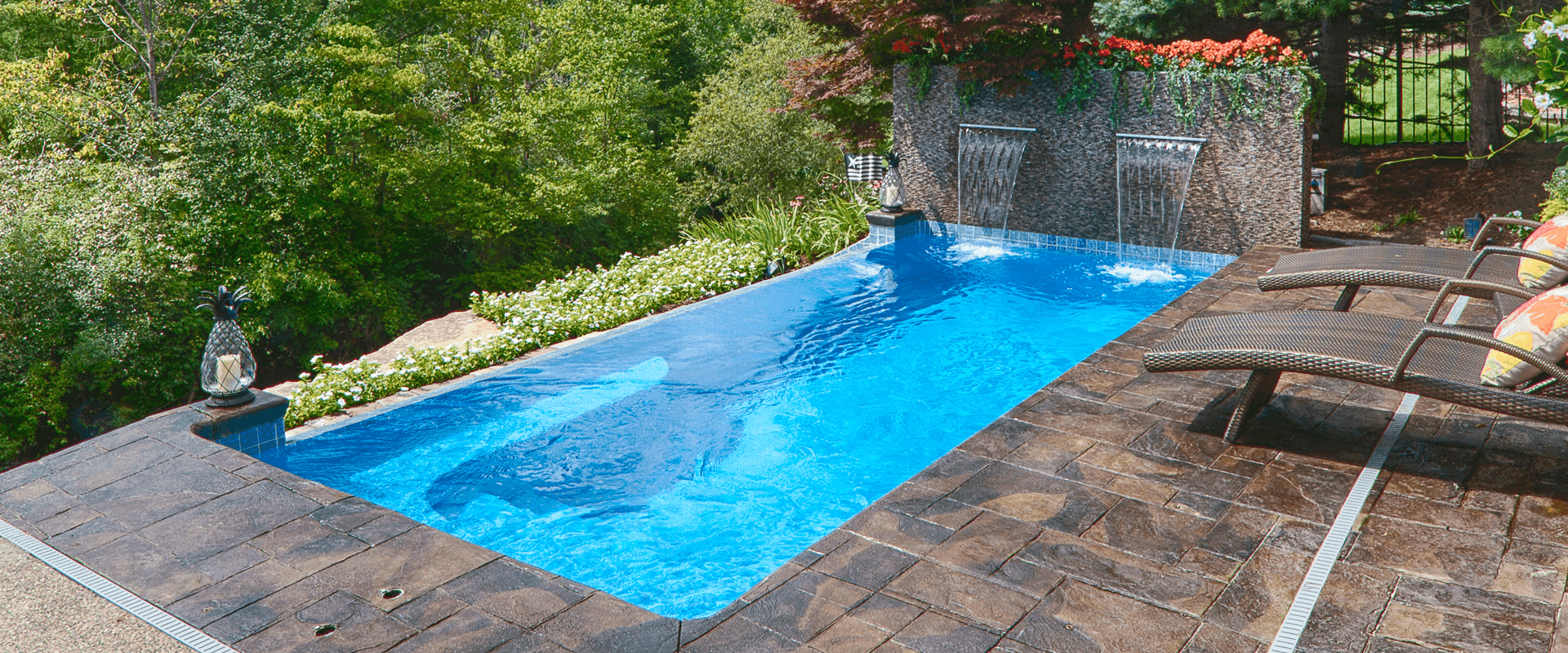877-929-7665
Examining the Elements Involved in Factoring LSI
Maintaining balanced pool water chemistry in your fiberglass pool is truly a balancing act. Each of the six factors that calculate the Langelier Saturation Index (LSI) can ebb and flow, although some are more reactionary and volatile than others. While maintaining all six factors may feel like a juggling act, understanding what they are, how they interact, and their impact on your pool is critical to keeping the LSI balanced and your water in equilibrium.
The Critical Role of pH
pH, or “potential of hydrogen,” is the most critical variable in water chemistry balance. While alterations of any involved equation variables can affect your water balance, a change in pH can have ten times the effect compared to other LSI factors.
pH levels indicate water’s acidity or basicity. They range from 0 to 14, with 0 being very acidic, 7 being neutral, and 14 being very basic. Chlorine and other sanitizers will only remain effective and function correctly within specific pH ranges—namely, the range between 7.2 and 7.4 deemed ideal for swimming pools. Hydrochloric or muriatic acid can lower high pH levels, while a low-pH pool will need an alkaline boost from sodium carbonate.
The best thing an owner can do for the health and safety of their pool and its frequent swimmers is to regularly test the pH and other chemical levels. Daily testing and checks before and after each use are recommended and will help you become more familiar with how various factors, including some outside your control, affect your pH and overall LSI levels.
Total Alkalinity
Alkalinity is often called “the yin to pH’s yang,” as the two are related. Alkalinity measures water’s capacity to withstand changes in pH. In fiberglass pools, recommended total alkalinity levels range from 80 to 120 parts per million.
Low alkalinity makes water corrosive, causing stains and etching on your pool’s surface. Water will become depository if alkalinity rises above the recommended range for fiberglass pools (120 ppm). As a result, pool surface scaling occurs and a white cloudy film may appear, clogging filters and reducing circulation.
Total Dissolved Solids (TDS)
As the name implies, total dissolved solids (TDS) include chemicals or anything other than calcium that remains after water evaporates. These solids can include salts, metals, minerals, and other organic materials that have entered and dissolved within the pool water. We recommend that the TDS level be no higher than 1,500 ppm (or 1,000 ppm above safe salt level in saltwater pools). A high TDS level can lead to algae blooms, scaling, or other pool stains.
Cyanuric Acid (Chlorine Stabilizer)
Cyanuric acid (CYA) will prevent the sun’s ultraviolet rays from decomposing free chlorine in your pool water. Levels between 30 and 50 ppm are recommended, but higher levels don’t necessarily mean better results. If the cyanuric acid level reaches 100 ppm or above, chlorine’s effectiveness at killing bacteria and algae is compromised.
Calcium Hardness
A lower calcium hardness level in your pool water results in a softer and silkier it will feel on swimmers’ skin. Calcium hardness is also essential for maintaining water cleanliness and equipment operation. Regulated calcium hardness of less than 120 ppm will help keep pool materials looking and working their best. When calcium hardness is too low, the water becomes aggressive and corrosive. When too high, pH levels raise, leading to cloudy water, surface discoloration, and filter-clogging calcium deposits.
Temperature
The temperature factor is the only non-chemical component of water chemistry balance and your pool’s LSI. Utilizing a pool heater will make your temperature factor much easier to control. Many swimmers enjoy a “bathwater” feel and temperature, but water warmer than 82 degrees Fahrenheit can encourage bacteria or algae growth. Calcium deposits form more quickly in warmer water, while a too-cool pool makes it easier for water to begin corroding equipment.
Parents of infants and young children should consider keeping temperatures slightly higher into the upper 80s. However, a pool used primarily for exercise or competitive swim training should skew lower, between 77 and 82 degrees Fahrenheit. A good general rule for many pool owners is aiming for a water temperature between 77 degrees and the mid-80s. Keeping a constant temperature will help prevent bacteria and algae growth and improve the efforts of chlorine, saltwater, or other pool sanitation measures.
Every Factor is Important
Many pool owners and even pool service professionals habitually test for pH and chlorine, and occasionally they check the alkalinity. However, this approach ignores many critical LSI factors. Although they do not tend to change as rapidly, You should also regularly test calcium hardness, CYA, and TDS. By testing all six factors in your pool water, you will have a more clear and complete understanding of its LSI and water balance.
